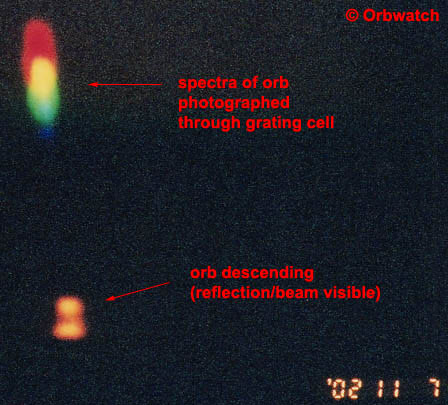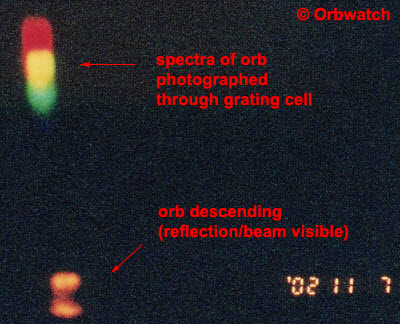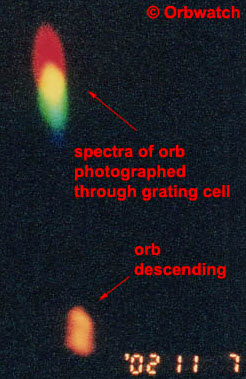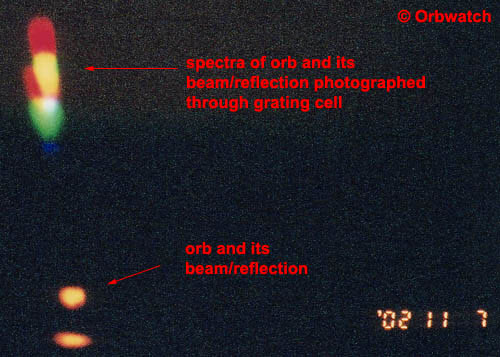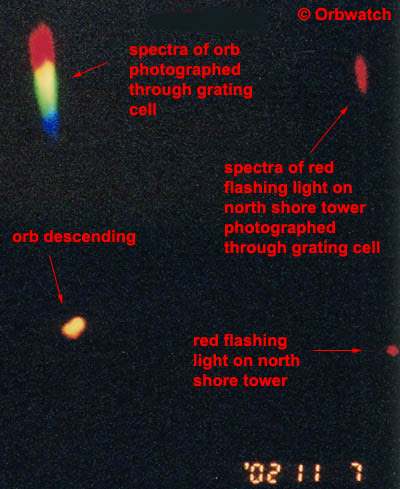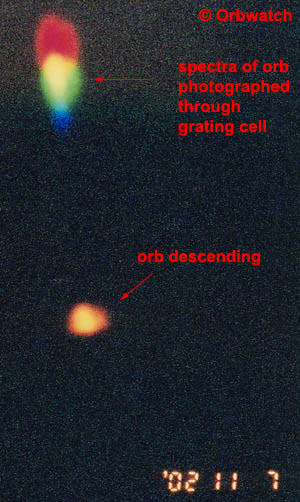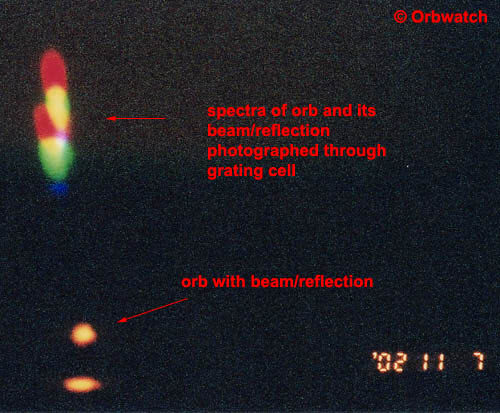SPECTRA
On the evening of 7th November 2002, I set up the Celestron 8" reflector telescope with the Pentax MZ-7 SLR camera attached. Between the telescope and the camera I inserted the Rainbow Optics Spectroscope (ROS) grating cell.
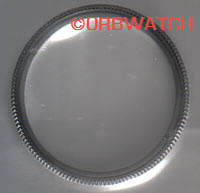
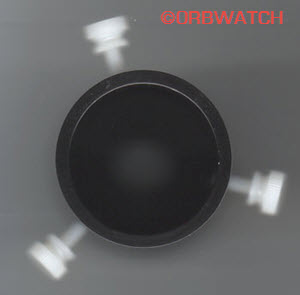
The grating cell screws into an adapter directly into the front of the Pentax. This then screws into the Celestron telescope in place of the eyepiece.
The grating cell contains a blazed diffraction grating which spreads light into its constituent colours. It forms these spectra by means of very fine parallel grooves, numbering thousands per inch, which have been formed in a coating on a piece of glass. These grooves form spectra because of the diffraction and interference of the light waves passing through them.
Unlike a prism, which forms a single spectrum, a diffraction grating forms a series of spectra lined up on two opposite sides of the observed light source. The first spectrum on each side is called the first-order spectrum. The next in line is called the second-order spectrum, and so on. Spectra of orders higher than the first usually overlap one another and get progressively fainter.
The following images are cropped scans of printed photographs taken with the Pentax SLR.
In these images taken with the grating between the telescope and camera, I have only shown the first-order spectrum. I positioned the grating and camera so that the spectra of the orbs appear above the orbs.
